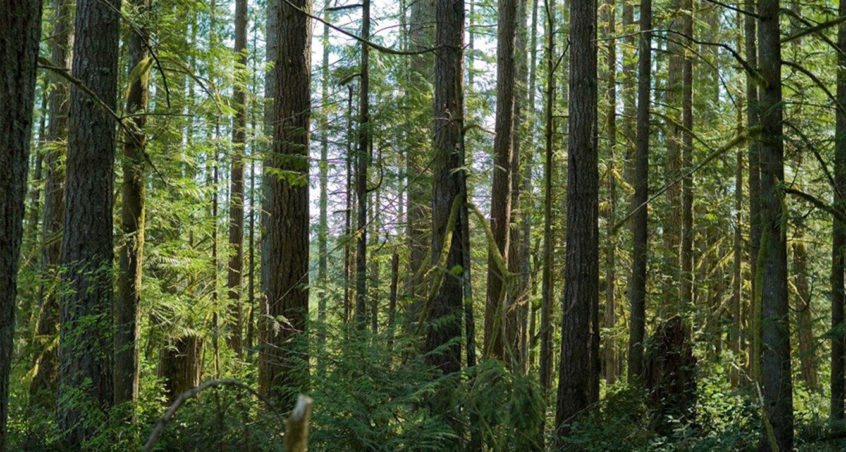High-rise buildings, densely-zoned neighborhoods and traffic likely come to mind when you think of King County. With more than 2.2 million residents, it is by far Washington’s most populous county with cities like Seattle, Bellevue, Kent and Renton.
But nestled among King County’s urban and suburban landscape is nearly 800,000 acres of publicly and privately-managed forested land. King County owns and manages more than 25,000 acres of forestland that the public can access and about 3,800 acres of designated working forested land.
With an eye toward building healthier forests, the county is in the process of implementing a series of forest stewardship projects at four forested locations. Just this week, the county announced plans to selectively thin overcrowded trees at Ravensdale Retreat Natural Area near Black Diamond and Taylor Mountain Forest near Hobart.
“We’re making room for the older, bigger trees and all of the values that they bring,” said Kelly Heintz, a natural resource land planner at King County.
Overcrowded forests with the same species or ages of trees can make the trees in the area vulnerable to pests and disease, Heintz said. With more room for trees to grow and more sunlight reaching the forest floor, the resulting forest will be healthier and more resilient, she added. Similar to how privately-managed working forests plant an average of three seedlings by hand for every one tree harvested, the county will plant a number of native tree species like Douglas fir, western white pine and western red cedar within selectively thinned areas over the winter to restore a more natural mix of trees.
Said Heintz:
“Promoting a healthy and resilient forest benefits us in numerous ways. They help maintain our clean waterways, promote biodiversity and wildlife habitat, clean the air, mitigate against climate change, create jobs and contribute to our quality of life. At the end of the day, healthy and sustainable forestlands are good for our environment, economy and for public health.”
Forest management practices at both sites will comply with certification granted by the Forest Stewardship Council, and all revenue generated from the sale of the logs will fund ongoing management of these and other King County-owned forestlands.
Improving forest health is an essential component of the county’s One Million Trees campaign and Strategic Climate Action Plan, which endeavor to improve rural and urban communities through tree plantings and proven-effective approaches to environmental stewardship. In cooperation with private and public partners, 895,006 trees have been planted to date in the county, which is on track to meet the goal of planting one million trees by 2020.
According to its 2017 Strategic Climate Action Plan, the county aims to:
“…facilitate collaboration on tree planting, by 2020, King County will work with multiple partners to develop a detailed 30-year plan for maximizing the percent of tree cover in both urban and rural King County while accommodating population and economic growth and meeting goals and needs for local agriculture and food production, wildfire prevention and working forests.”
Also included in the action plan are incentives and technical assistance for private forestland owners to support forestry efforts and encourage landowners to preserve forested land. The county offers on-site visits to help private landowners manage their forests, free wildfire risk assessments, access to wildfire safety planning reference materials, an 8-week forest stewardship course in partnership with WSU Extension Forestry and other resources to support forestland owners and people who live in or near forests.
“The private forestland owners are our partners and stakeholders,” Heintz said. “We are working together to ensure the county’s working forests continue to provide economic and social benefits.”
